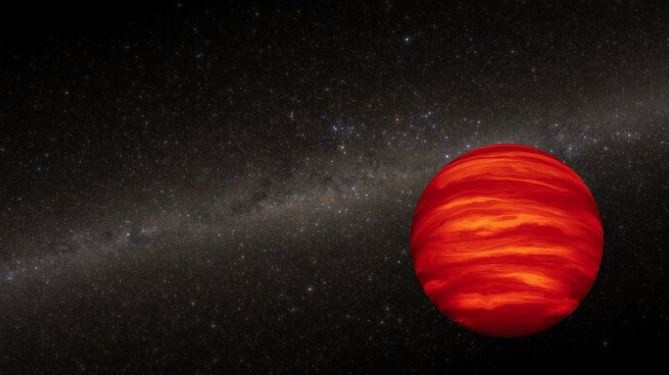Madrid. A new study based on observations from the Hubble Space Telescope has found that the older a brown dwarf is, the less likely it is to have a dwarf companion.
Brown dwarfs are interstellar objects larger than Jupiter but smaller than lower mass stars. Like stars, they collapse from a cloud of gas and dust, but do not have enough mass to sustain hydrogen fusion like a normal star. Like stars, brown dwarfs can be born in pairs and orbit one another.
But an advanced age means that the dwarf binary pair is so weakly bound by gravity that they drift apart over a few hundred million years as a result of the attraction of the stars around them.
Hubble can detect binaries at a distance of up to 480 million kilometers, the approximate separation between our Sun and the asteroid belt. But the astronomers who carried out the study did not find any binary pairs in a sample of brown dwarfs in the solar neighborhood.
“Our study confirms that widely separated companions are extremely rare among cooler, lower-mass isolated brown dwarfs, even though brown dwarf binaries are observed at younger ages. This suggests that such systems do not survive in time,” lead author Clémence Fontanive of the Trottier Institute for Exoplanet Research at the University of Montreal said in a statement.
In a similar study Fontanive conducted a couple of years ago, Hubble observed extremely young brown dwarfs and some had binary companions, confirming that star formation mechanisms produce binary pairs between low-mass brown dwarfs. The lack of binary companions for older brown dwarfs suggests that some may have started out as binaries but drifted apart over time.
The new Hubble findings further support the theory that brown dwarfs are born in the same way as stars, through the gravitational collapse of a cloud of molecular hydrogen. The difference is that they do not have enough mass to sustain nuclear fusion of hydrogen to generate energy, while stars do.
More than half of the stars in our galaxy have a companion star that resulted from these formation processes, and the most massive stars are most commonly found in binary systems. “The motivation for the study was really to see how low-mass the observed trends hold across multiple star systems,” Fontanive said.
“Our Hubble survey provides direct evidence that these binaries we observe when they are young are unlikely to survive to old ages; they are likely to be altered. When they are young, they are part of a molecular cloud and then, as they age, the cloud disperses. As that happens, things start moving and stars pass by each other. Because brown dwarfs are so light, the gravitational attraction that binds the wide binary pairs together is very weak, and the stars that they overlook can easily tear these binaries apart,” Fontanive said.
The team selected a sample of brown dwarfs previously identified by NASA’s Wide Field Infrared Explorer. It sampled some of the coldest, lowest-mass ancient brown dwarfs in the solar neighborhood. These old brown dwarfs are so cold (a few hundred degrees warmer than Jupiter in most cases) that their atmospheres contain water vapor that condenses.
To find the coolest companions, the team used two different near-infrared filters, one in which cool brown dwarfs are bright and another that covers specific wavelengths where they appear very faint as a result of the absorption of water in their atmospheres.
“Most stars have friends, whether they are binary companions or exoplanets,” added team member Beth Biller from the University of Edinburgh in the United Kingdom. “This survey really shows that the same is not true for brown dwarfs. After a brief period early in their lives, most brown dwarfs remain single for the rest of their very long existence.”
“This is the best observational evidence to date that brown dwarf pairs move apart over time,” Fontanive said. “We could not have performed this type of study and confirmed previous models without Hubble’s keen insight and sensitivity.”
#Aging #brown #dwarfs #reclusive
– 2024-04-08 07:59:10
